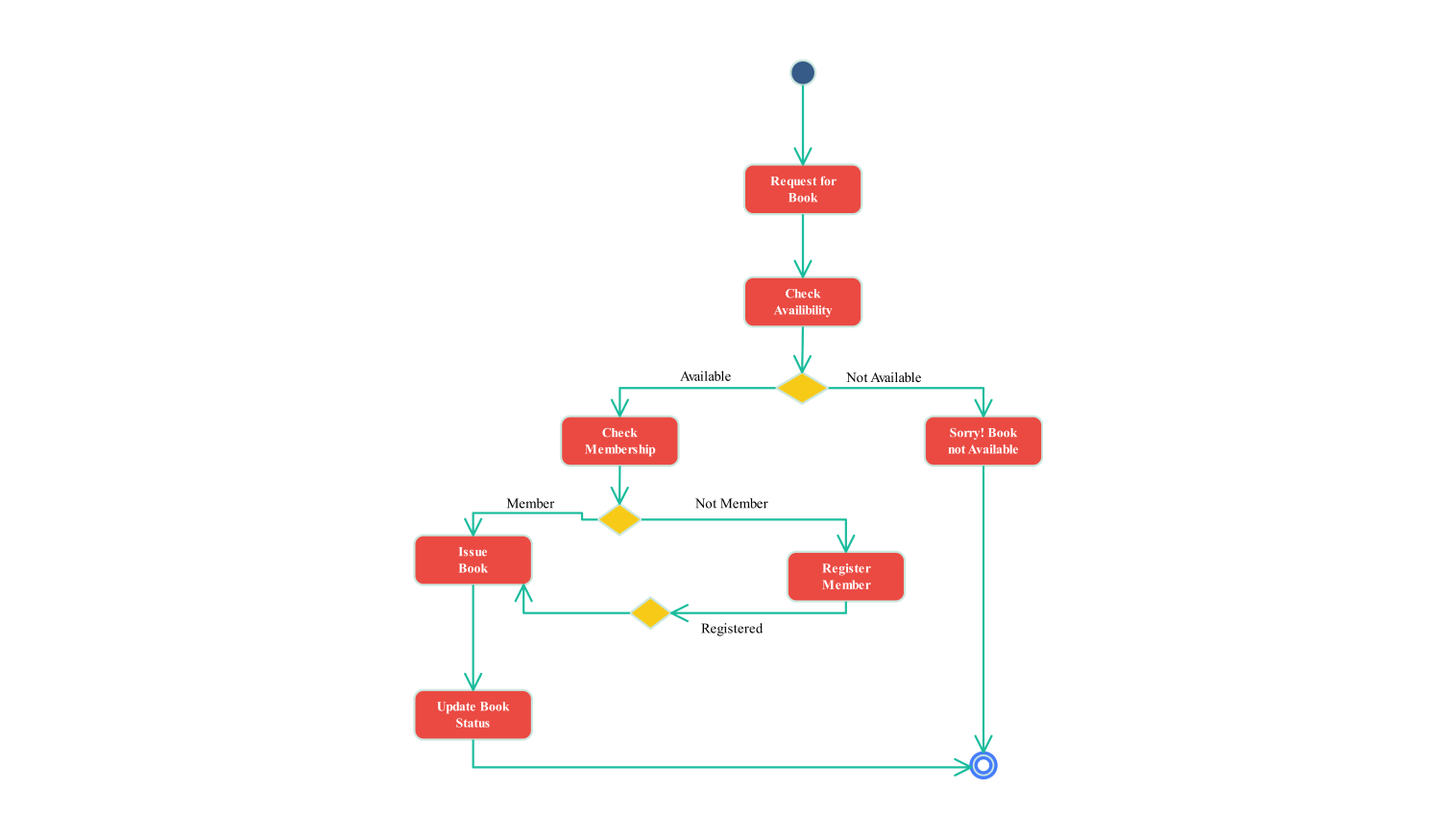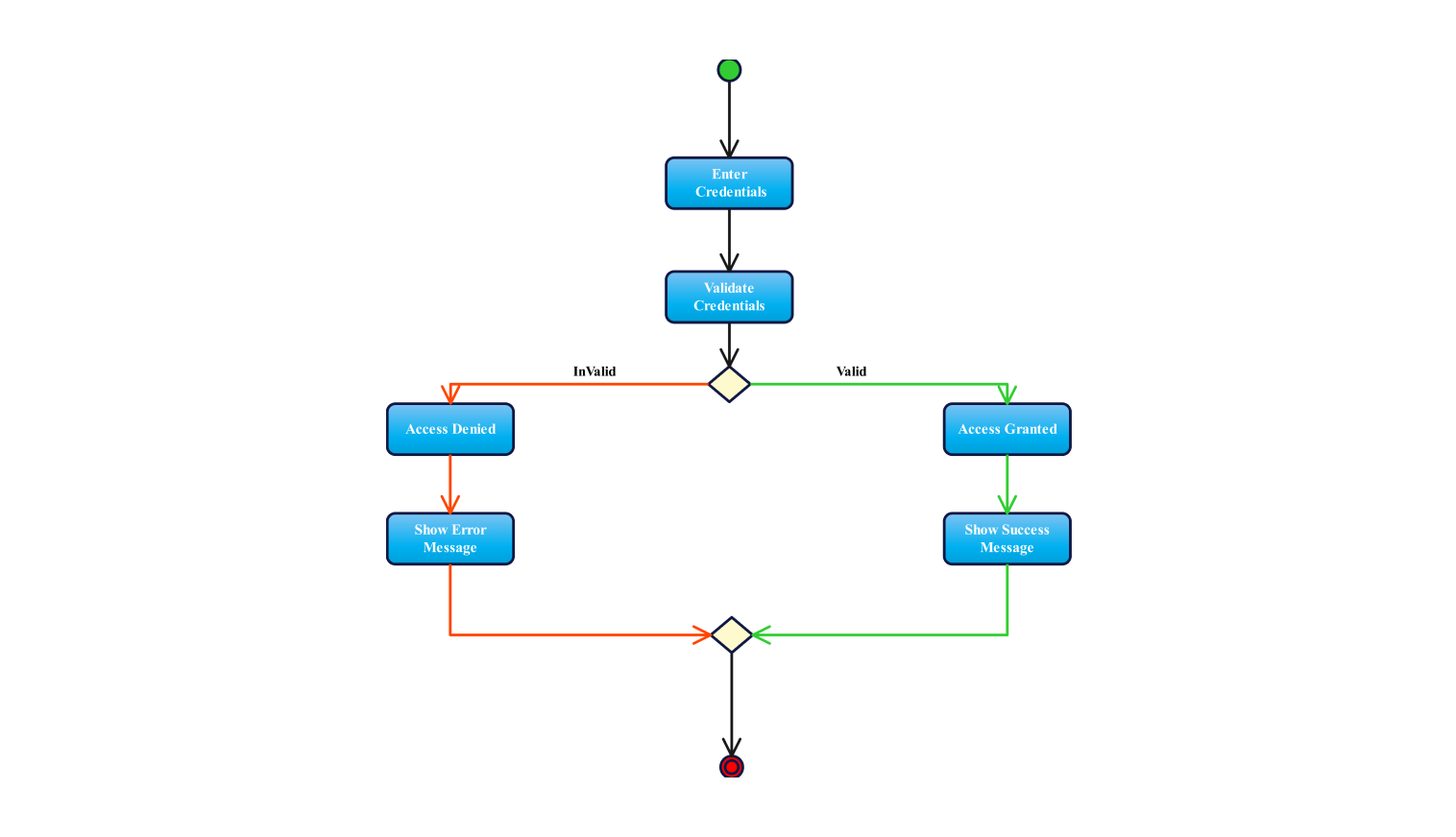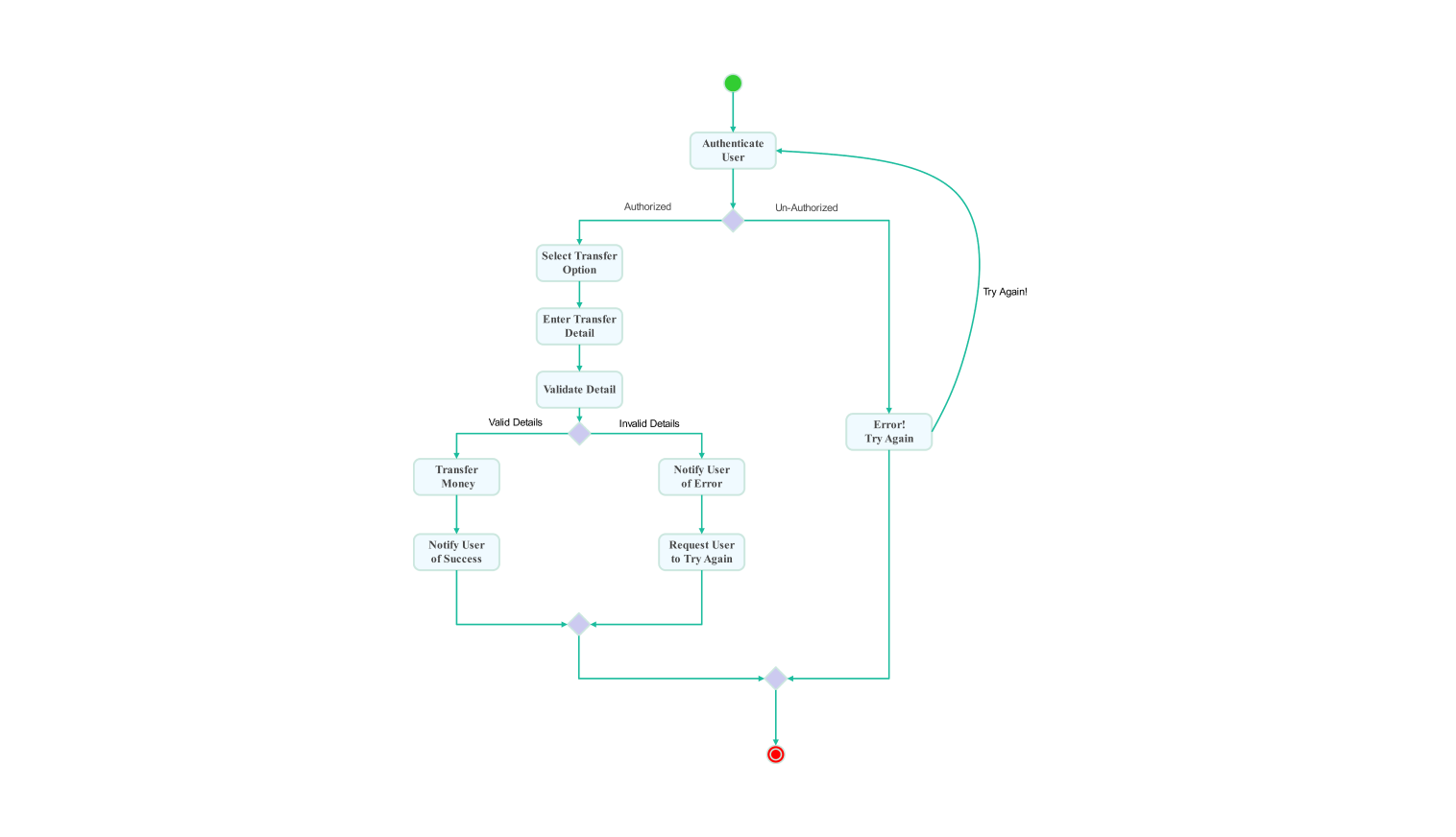- All templates
- Activity diagram templates
- Activity diagram buisness analysis
About this activity diagram for buisness analysis
The business analysis process within a project lifecycle is depicted in this activity diagram. It all begins with a business need. We must learn the main issue or behavior to implement later.
Following this, a stakeholder analysis is performed to find out all persons, groups, or organizations that can be affected by or affect the project. This step is very important for making sure everyone involved has been taken into consideration during the next stages.
Then, the requirement collection phase is initiated. This phase gathers stakeholders' information about their system or solution needs. Afterward, analysts will check the requirements. They will see if they are clear, valid, and feasible.
Upon completion of the analysis processes, formal documentation of requirements is performed. This documentation serves as a reference during the whole lifecycle of the project. It aims to eliminate any confusion about participants' obligations.
Once documentation is done, it is necessary to validate the requirements to ascertain they meet business needs and also have consensus from all parties involved. At this point, a decision node will determine whether or not they are acceptable.
If not acceptable, it goes back to the "refine requirements" stage. There, the requirements must be reevaluated and changed as needed. The revised set of requirements must then be validated again so that it can be confirmed these now meet the required conditions.
If the validation is successful, the next step is to apply these requirements through a plan. A careful scheme for what it would take to satisfy essential needs becomes more apparent as a result of this.
In this phase, we assess various potential solutions. We choose the solution that best meets our goals. The recommended solution must be put into effect immediately. Its effectiveness must be closely observed.
Next is the phase of review and feedback. It is critical to evaluate the success of the solution through this step and find places for its improvement. Therefore, stakeholders provide feedback to make certain that their needs are met.
The final validation and review process ensures that all business requirements are met. It is a practical guide for business analysis. It shows each step that must be carefully designed and executed for project success.
How to use this template
Click on Use this template to use it. After the template opens, customize the diagram. Drag and drop new shapes from the libraries on the left to fit your system's needs.
Edit the text. Style the boxes, lines, and text by clicking on the elements. You can save some common elements in your library. You can reuse them when creating similar diagrams.
Click the theme icon if you want to use the “one-click beautify” feature. This feature instantly changes the colors, fonts, and layout of your picture. It makes it look professional.
You can export your file in several formats for later use. Click Export to select the format (.eddx, .pdf, .png, .jpg).
Benefits of the activity diagram
It cannot be denied that the employment of activity diagrams in business evaluation provides a variety of benefits. First and foremost, they bring about a better understanding since they illustrate complicated enterprise operations in an uncomplicated manner.
In such a case, the diagram will show how a sequence of actions is linked in a work environment. All stakeholders will then have a common understanding.
Additionally, activity diagrams are useful for identifying any blockages in business operations. By defining every single step, it allows us to spot the rough edges and places that might need fixing. Consequently, this assists business analysts in refining how work gets done to make them more effective.
FAQs about the activity diagram
-
What is an activity diagram in business analysis?
Activity diagrams provide a graphical representation of workflows or processes within an organization’s business system. It illustrates how business activities are ordered, what determinations are made, and the movement of various pieces of information or management systems.
-
How do you create an activity diagram?
Begin an activity diagram by pinpointing the primary actions or duties in the flow. Set up beginning and end points; include decision nodes when necessary, and finally link these components with arrows showing how to manage operations.
-
What are the important elements of an activity diagram?
The most important components are: 1. Activities, shown as ovals. 2. Decisions, shown as diamonds. 3. Start and endpoints, shown as circles. 4. Flow arrows, which show the order of operations.
Related templates
Get started with EdrawMax today
Create 210 types of diagrams online for free.
Draw a diagram free Draw a diagram free Draw a diagram free Draw a diagram free Draw a diagram free



